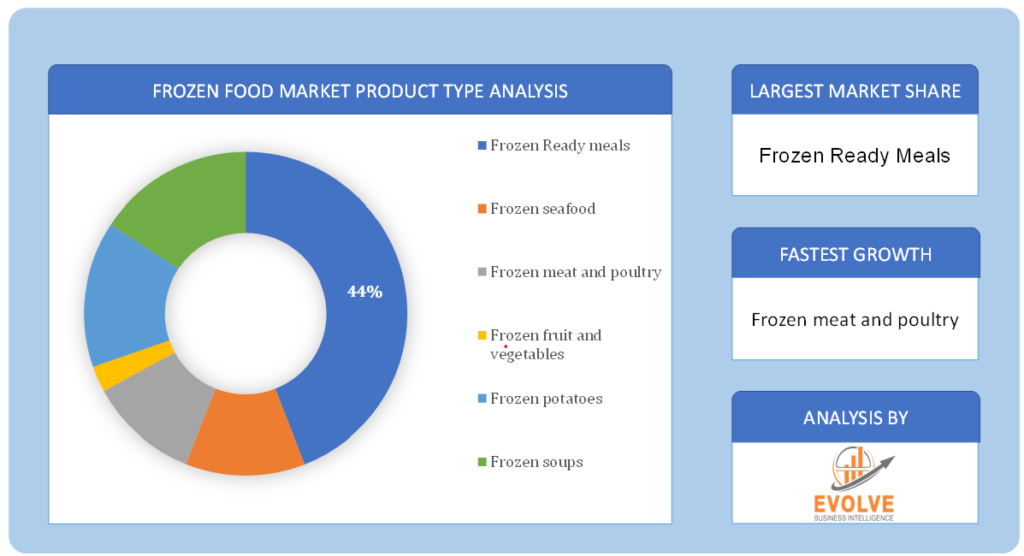Baby Monitoring System Market Overview
The Baby Monitoring System Market Size is expected to reach USD 607.2 Billion by 2033. The Baby Monitoring System Market industry size accounted for USD 397.3Billion in 2023 and is expected to expand at a compound annual growth rate (CAGR) of 4.41% from 2023 to 2033. The Baby Monitoring System Market refers to the industry involved in the manufacturing, distribution, and sale of products and services designed to monitor and ensure the safety and well-being of infants and babies. These systems typically include a combination of devices and technologies that allow parents or caregivers to keep a close watch on their babies, even when they are not in the same room. Baby monitoring systems can encompass a range of features and functions, such as video and audio monitoring, temperature and humidity sensors, movement detection, and even vital sign monitoring in some cases.
The Baby Monitoring System Market has seen significant growth due to the increasing awareness of baby safety and the desire for convenience among parents and caregivers. It offers peace of mind, allowing parents to keep a close eye on their infants, even when they are not in the same room. This market includes a variety of products from traditional audio baby monitors to more sophisticated, high-tech solutions, catering to a wide range of consumer preferences and needs.
Global Baby Monitoring System Market Synopsis
The COVID-19 pandemic has had a mixed impact on the Baby Monitoring System Market. The pandemic led to lockdowns, remote working, and more parents spending time at home. As a result, there was an increased demand for baby monitoring systems. Parents sought ways to keep a close eye on their infants while working or tending to other responsibilities. This led to a surge in the sales of baby monitors, as they offered a convenient solution for caregivers during the pandemic. The pandemic accelerated the development of features and technologies in the baby monitoring system market. Manufacturers sought to enhance their products, introducing more advanced features like health monitoring, mobile app connectivity, and smart home integration to meet changing consumer needs. With the growing demand, the baby monitoring system market became more competitive. New players and existing companies introduced a wide range of products, leading to greater diversity in product offerings and varying price points.
Baby Monitoring System Market Dynamics
The major factors that have impacted the growth of Baby Monitoring System Market are as follows:
Drivers:
Ø Technological Advancements
Parents are increasingly concerned about the safety and well-being of their infants, which drives the demand for baby monitoring systems. These systems provide a sense of security by allowing parents to keep a close eye on their children, particularly during sleep or while they are in another room. Ongoing technological advancements have led to the development of more sophisticated and feature-rich baby monitoring systems. These systems now offer high-definition video, two-way communication, mobile app integration, and even health monitoring features, making them more appealing to tech-savvy parents. Baby monitors with smart home integration, such as compatibility with voice assistants or smartphone apps, have gained popularity. These systems can be part of a broader smart home ecosystem, enhancing convenience and connectivity for parents.
Restraint:
- Perception of Privacy Concerns
Baby monitors with motion and sound detection features can sometimes trigger false alarms, causing unnecessary stress for parents. This can lead to a lack of trust in the accuracy of the devices. The use of cameras and audio devices in baby monitors has raised concerns about privacy. Parents and caregivers worry about the potential for unauthorized access to the video and audio feeds, leading to concerns about the security of these devices. Many baby monitors have limited range, which means they are effective only within a certain distance from the base unit. This limitation can be problematic for larger homes or outdoor activities, reducing the versatility of the devices. Baby monitors are dependent on technology, including power sources, Wi-Fi connectivity, and mobile apps. If there are power outages or technical issues, the reliability of these systems can be compromised. The baby monitoring industry must comply with various safety and quality regulations. Meeting these standards can increase production costs and create barriers to entry for some manufacturers.
Opportunity
⮚ Growing demand for Health and Wellness Monitoring
There is a growing interest in health and wellness monitoring for infants. Baby monitoring systems that can provide real-time information on vital signs, sleep quality, or even potential health issues like sleep apnea could find a niche in the market. Baby monitors with advanced sensors for environmental factors like air quality, humidity, and temperature can provide parents with insights into creating a healthier sleeping environment for their infants. There are opportunities for companies to expand their reach into emerging markets where there is growing disposable income and increasing awareness of child safety and well-being. The demand for eco-friendly and sustainable products is on the rise. Developing baby monitoring systems with eco-friendly materials and energy-efficient designs can cater to environmentally conscious consumers.
Baby Monitoring System Market Segment Overview
By Product Type
 Based on Product Type, the market is segmented based on Audio and Video. The video monitor segment accounted for a higher value share, owing to surge in demand for smart video monitors from the customers. Video baby monitors are essential for capturing round the clock data on the new born and alerting parents when indicators of distress such as vomiting and crying are detected. As a result, demand for video baby monitors has mostly surged among millennial parents, supporting market development.
Based on Product Type, the market is segmented based on Audio and Video. The video monitor segment accounted for a higher value share, owing to surge in demand for smart video monitors from the customers. Video baby monitors are essential for capturing round the clock data on the new born and alerting parents when indicators of distress such as vomiting and crying are detected. As a result, demand for video baby monitors has mostly surged among millennial parents, supporting market development.
By Sales Channel
Based on Sales Channel, the market has been divided into Retail Stores, Supermarket, E-Commerce and Specialty Stores. The retail stores segment witnessed the highest revenue of the baby monitors market, owing to rise in number of retail outlets in both urban and rural areas worldwide. Moreover, availability of different types of monitors in these retail stores is the major factor that boosts the growth of the baby monitors through retail stores.
Global Baby Monitoring System Market Regional Analysis
Based on region, the global Baby Monitoring System Market has been divided into North America, Europe, Asia-Pacific, the Middle East & Africa, and Latin America. North America is projected to dominate the use of the Baby Monitoring System Market followed by the Asia-Pacific and Europe regions.
North America holds a dominant position in the Baby Monitoring System Market. The North American baby monitoring system market is mature and competitive. The major factors driving the growth of the market in this region are the increasing awareness regarding child safety among working parents and the high disposable income of consumers. North America has a well-established Baby Monitoring System Market. High disposable incomes, a culture of convenience, and concerns for child safety have driven demand. Smart baby monitors and health-monitoring features are popular in this region. The market is competitive, with many local and international players.
Asia-Pacific Market
The Asia Pacific baby monitoring system market is the fastest-growing market in the world. The major factors driving the growth of the market in this region are the increasing awareness regarding child safety among working parents, the rising disposable income of consumers, and the growing population. China has a growing Baby Monitoring System Market due to a rising middle class and increased awareness of child safety. The market has witnessed rapid technological advancements, and affordable products with basic features are widely available.
Competitive Landscape
The global Baby Monitoring System Market is highly competitive, with numerous players offering a wide range of software solutions. The competitive landscape is characterized by the presence of established companies, as well as emerging startups and niche players. To increase their market position and attract a wide consumer base, the businesses are employing various strategies, such as product launches, and strategic alliances.
Prominent Players:
- Summer Infant Inc.
- VTech Holdings Limited
- Dorel Industries Inc.
- Koninklijke Philips N.V.
- Nest Labs Inc.
- Angelcare Monitor Inc
- Lorex Technology Inc.
- Withings Inc.
- ShenZhen Foscam Intelligent Technology Co. Ltd.
- Samsung Electronics Co. Ltd.
Key Development
In October 2022, Bonoch, a new childcare product business, has launched its latest innovation to help families with multiple children. Bonoch’s latest video baby monitor features two HD cameras that feed data to a 7-inch split-screen monitor, allowing users to focus on several perspectives at the same time.
Scope of the Report
Global Baby Monitoring System Market, by Product Type
- Audio
- Video
Global Baby Monitoring System Market, by Sales Channel
- Retail Stores
- Supermarket
- E-Commerce
- Specialty Stores
Global Baby Monitoring System Market, by Region
- North America
- US
- Canada
- Mexico
- Europe
- UK
- Germany
- France
- Italy
- Spain
- Benelux
- Nordic
- Rest of Europe
- Asia Pacific
- China
- Japan
- South Korea
- Indonesia
- Austalia
- Malaysia
- India
- Rest of Asia Pacific
- South America
- Brazil
- Argentina
- Rest of SouthAmerica
- Middle East &Africa
- Saudi Arabia
- UAE
- Egypt
- SouthAfrica
- Rest of Middle East & Africa
| Parameters | Indicators |
|---|---|
| Market Size | 2033: $USD607.2Billion |
| CAGR | 4.41% CAGR (2023-2033) |
| Base year | 2022 |
| Forecast Period | 2023-2033 |
| Historical Data | 2021 |
| Report Coverage | Revenue Forecast, Competitive Landscape, Growth Factors, and Trends |
| Key Segmentations | Product Type, Sales Channel |
| Geographies Covered | North America, Europe, Asia-Pacific, Latin America, Middle East, Africa |
| Key Vendors | Summer Infant Inc., VTech Holdings Limited, Dorel Industries Inc., Koninklijke Philips N.V., Nest Labs Inc., Angelcare Monitor Inc, Lorex Technology Inc., Withings Inc., ShenZhen Foscam Intelligent Technology Co. Ltd. and Samsung Electronics Co. Ltd. |
| Key Market Opportunities | • Growing demand for Health and Wellness Monitoring |
| Key Market Drivers | • Technological Advancements |
REPORT CONTENT BRIEF:
- High-level analysis of the current and future Baby Monitoring System Market trends and opportunities
- Detailed analysis of current market drivers, restraining factors, and opportunities in the future
- Baby Monitoring System Market historical market size for the year 2021, and forecast from 2023 to 2033
- Baby Monitoring System Market share analysis at each product level
- Competitor analysis with detailed insight into its product segment, Government & Defense strength, and strategies adopted.
- Identifies key strategies adopted including product launches and developments, mergers and acquisitions, joint ventures, collaborations, and partnerships as well as funding taken and investment done, among others.
- To identify and understand the various factors involved in the global Baby Monitoring System Market affected by the pandemic
- To provide a detailed insight into the major companies operating in the market. The profiling will include the Government & Defense health of the company’s past 2-3 years with segmental and regional revenue breakup, product offering, recent developments, SWOT analysis, and key strategies.









